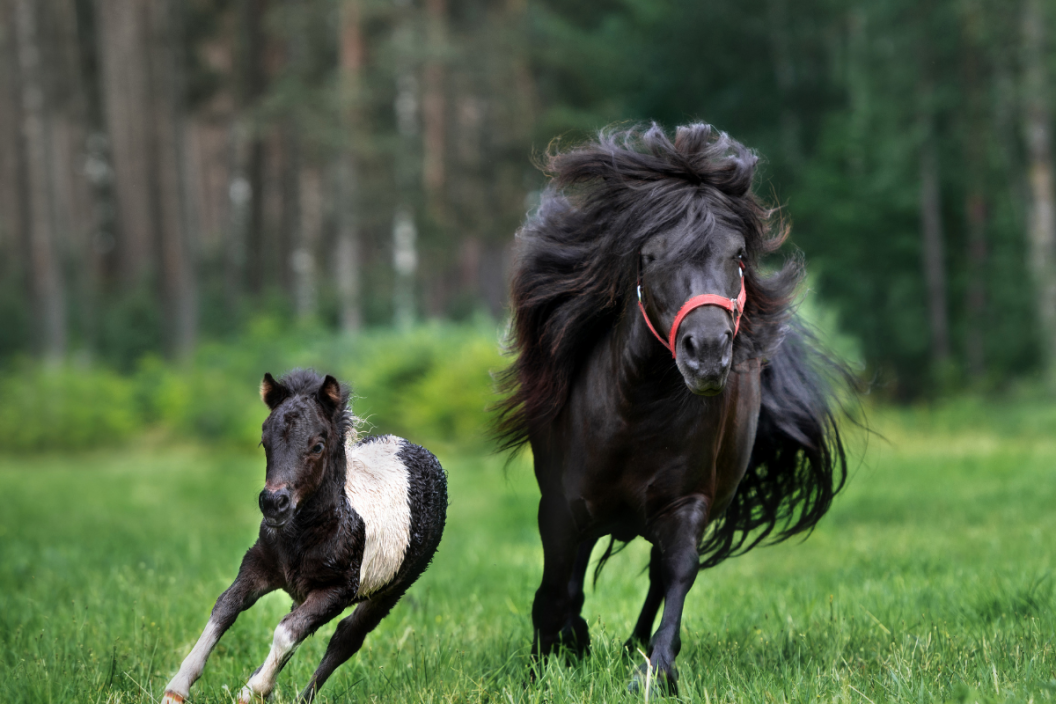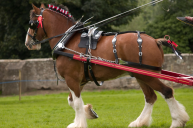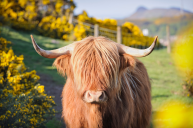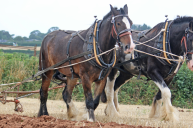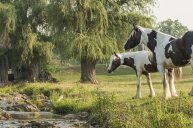Shetland ponies are more than just a kid's introduction to horses.
Out the pony and miniature horse breeds, Shetland ponies are one of the most popular in the world. Their small statue and even temperament (unlike some other wild-roaming breeds) make Shetlands an excellent choice for children. However, they also have a long and varied history. Despite their small size, they have worked on farms, in coal mines, competed as race horses, and even stared in a tourism campaign.
1. Shetland ponies have been around since the end of the last ice age.
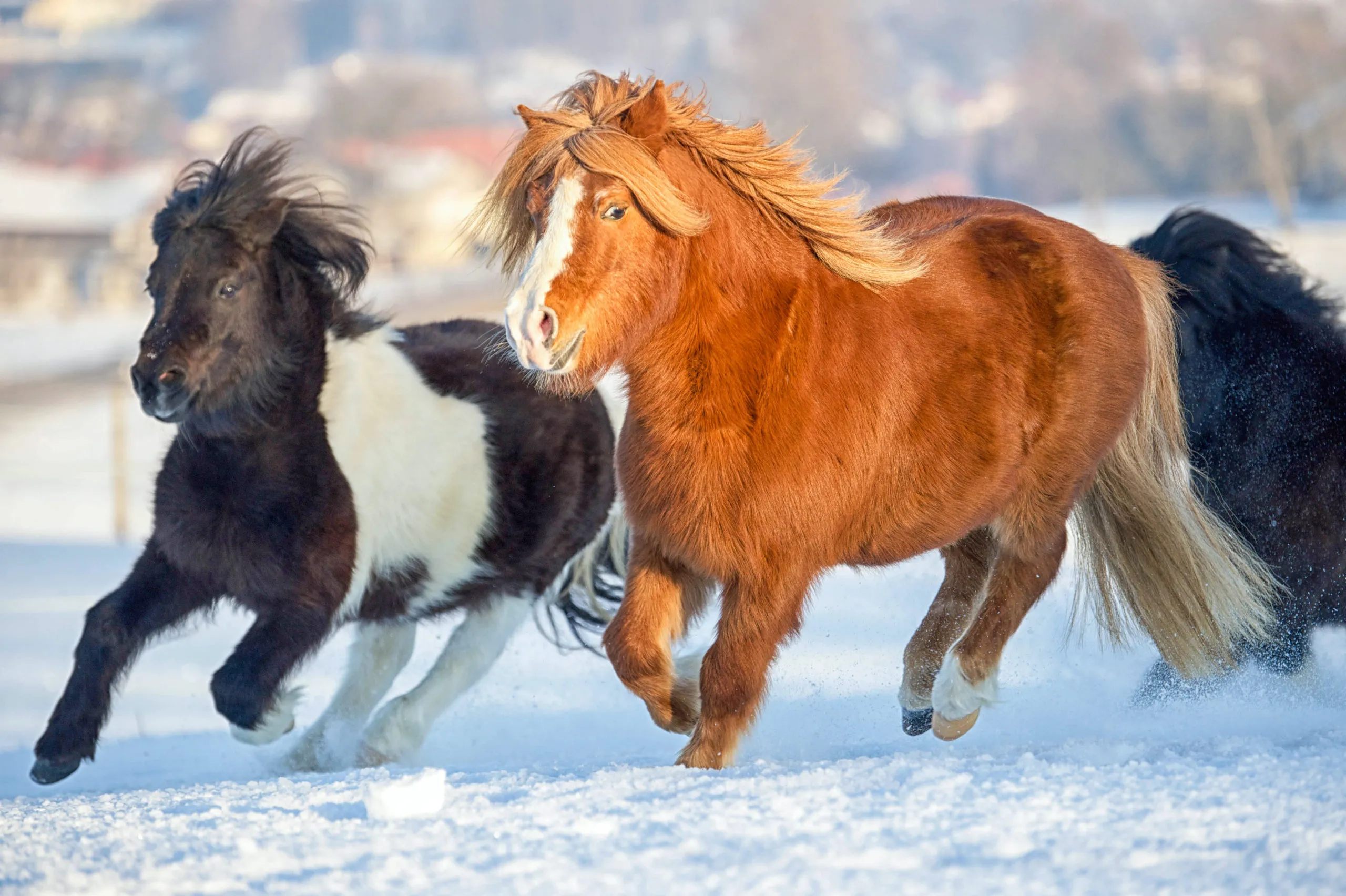
Shetland ponies are native to Scotland's Shetland Islands, which are located in the northwestern part of the country. According to NorthLink Ferries, "Ponies are thought to have arrived in Shetland by crossing ice fields at the end of the last ice age, around the same time that woolly mammoths still roamed." They crossbred with another small horse, the Celtic pony during that time, and developed their characteristic hardiness while living in isolated, harsh climates.
2. Shetlands run free but are not wild.
https://www.instagram.com/p/CLe6theKRQq/
Hundreds of small ponies roam the Shetland Islands, but they are not wild. They are all owned by local land tenants, or "crofters," who look after them. Traditionally, crofters did not have enough food, so instead they marked the Shetland Ponies to show ownership and allowed them to run wild until they were needed again.
3. Shetlands are extremely small and strong.
They are the tiniest of the pony breeds found in the United Kingdom (no more than 42 inches tall), but they are also the toughest. Shetland ponies can pull up to twice their body weight; a draft horse can only pull half as much.
4. Shetlands were originally farm horses.
https://www.instagram.com/p/CMMvdlLJqCb/
Archaeological excavations have discovered pony bones at human settlements dating back to the Bronze age, and evidence suggests Shetlands were used for work and not food. They were used primarily on farms until the establishment of coal mines.
5. Shetlands became pit ponies during the industrial revolution.
After Britain's Mines Act in the mid-1800s prohibited women and children from working in coal mines. Shetlands were used to fill the gap in labor; their small size, hardy nature, and docile temperament allowed them to be easily trained to carry heavy loads of coal in and out of underground tunnels.
6. Shetlands are perfect for children.
https://www.instagram.com/p/CGWPoPaAP1G/
RELATED: 20 Most Popular Horse Breeds Around the World
Shetlands are even tempered and docile, which makes them perfect for even small children. Toddlers can begin riding ponies by the time they are almost three years old, and until they reach approximately 5' tall and 100lbs. In fact, Shetland ponies are even used as a racehorse in the Grand National in Europe for child jockeys. In Australia, Shetlands are used to give children ages 6-16 an introduction to racing in the Junior Harness.
7. Shetlands from the Shetland Isles are different from American Shetlands.
The American Shetland Pony Club was established in 1888 to document and record the Shetland breed in the United States. Shetlands were crossbred with Hackneys, Welsh, and Harness Show Ponies to create a lighter appearance, and American Shetlands are allowed up to 11.5 hands.
The Shetland Pony Stud-Book Society was founded in 1890 to regulate and keep track of the breeding of Shetlands in Britain and Scotland, and their standards state that no registered stock can be taller than 11 hands.
8. Shetlands can be any color except spotted.
https://www.instagram.com/p/CMxM6CKn4iw/
According to the UK Shetland Pony Stud-Book Society, "Shetland ponies may be any colour known in horses except spotted." Common coats include chestnut, bay, and pinto, though black is most popular. While appaloosa (spotted) coats are not approved, Shetlands coat's can be skewbald (white and another color) or piebald (white and black).
9. Shetlands need company and space to move around.
As with other horses and herd animals, Shetlands are social creatures. Optimally they should live in a herd with other Shetland ponies, though if this isn't possible they need at least one other companion—either another miniature horse or a donkey—to keep them company. In addition, having evolved running wild on the Shetland islands, they need plenty of space to graze. Each pony in the herd should have at least once acre of land.
10. Shetland ponies were used in a Scottish tourism campaign.
https://www.instagram.com/p/-q7Bz3q3Xi/
In 2013, as part of the "Year of Natural Scotland" tourism campaign, two Shetland ponies named Fivla and Vitamin, were dressed in cardigans and photographed around the county. The campaign was so popular that, according to Business Insider, the website containing the pony promotional photographs crashed "presumably due to excessive traffic all day."
Do you love Shetland ponies? Tell us on the Wide Open Pets Facebook page!
